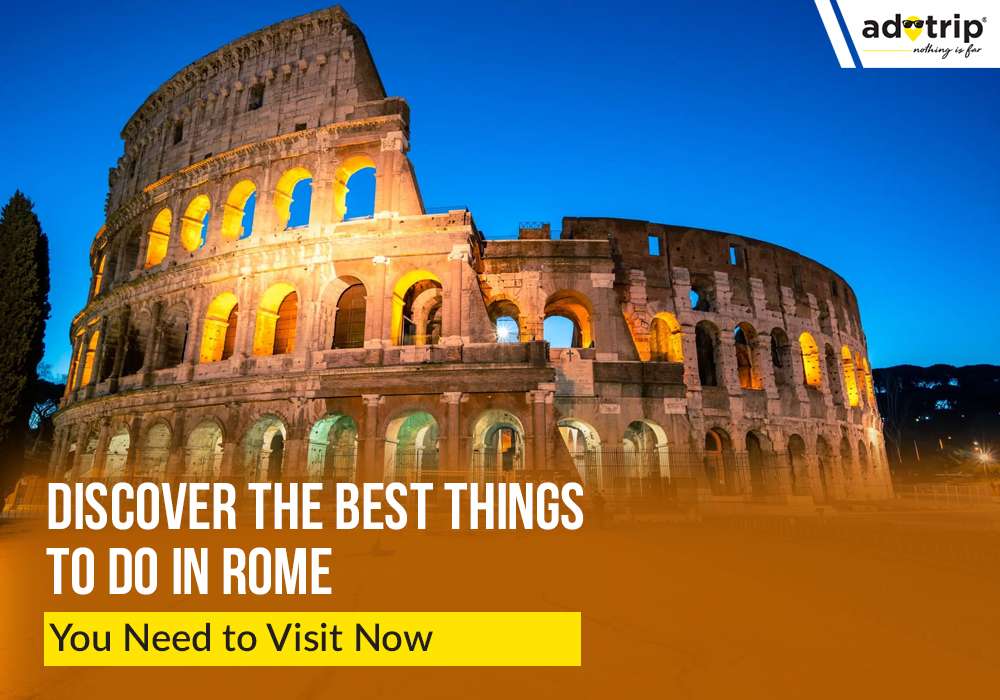
Last Updated At: 26-Dec-2024
The Best 15 Things To Do in Rome - Attractions & Activities
Rome is often referred to as the City of Seven Hills due to its unique geographic location and also as the "Eternal City." Renowned as the cradle of Western civilization and Western Christian culture, Rome holds a special place in history as the centre of the Catholic Church. The city is full of ancient ruins, beautiful buildings, and delicious food, making it a place where history and modern life come together. Whether you’re visiting famous landmarks or enjoying a meal at a top restaurant, there’s always something amazing to see and do. Every street in Rome has its own special charm.
Here are the top 15 things to do in Rome, Italy that you simply can't miss! Looking for help planning your Roman adventure? Check out Adotrip, your go-to travel partner, for an unforgettable experience!
List of Top 15 Things to Do in Rome
- Visit the Colosseum
- Explore the Vatican Museums and the Sistine Chapel
- See the Pantheon
- Wander around Castel Sant’Angelo
- Throw a Coin in the Trevi Fountain
- Admire Art at the Borghese Gallery and Museum
- Enjoy the View from Gianicolo Hill
- Visit the Capitoline Museums
- Discover the Domus Aurea
- Taste Local Flavors at Testaccio Market
- Explore Centrale Montemartini
- Attend a Show at the Rome Opera House
- Tour the National Museums of Rome
- Shop at Mercato Campagna Amica
- Experience the Excitement at Stadio Olimpico
1. Visit the Colosseum
No visit to Rome is complete without seeing the Colosseum. This is perhaps one of the most historical sites to visit in Rome. It was constructed between 72-80 AD and it was designed to accommodate between 80,000 people who came to watch gladiator fights and other acts. Now, it is a marvellous place, which can show visitors the greatness of the past of Rome. Tickets to the Colosseum in Rome can be purchased in advance to avoid long lines. Standing inside the Colosseum, you can almost hear the roar of the crowd as you imagine the spectacles that once took place here.
Tips:
- Book a guided tour of Rome's ancient ruins to learn more about the Colosseum's history.
- Visit early in the morning or late in the afternoon to avoid the crowds.
2. Explore the Vatican Museums and the Sistine Chapel
The Vatican Museums and the Sistine Chapel are home to some of the best artwork in the world. Founded by Pope Julius II in the 16th century, the museums comprise 54 galleries of art and archaeological interests, including sculptures, Renaissance paintings and the floor to ceiling frescoes in the Sistine chapel by Michelangelo. The idea of painting the ceiling of the Sistine Chapel is one of the best ideas ever produced and Michelangelo did it in the best way possible. It is a place to visit if you are keen on religious art and architecture.
Tips:
- Book your tickets online to skip the line.
- Consider a guided tour to fully appreciate the art and history.
3. See the Pantheon
It was established in 125 AD by Emperor Hadrian and is one of the most famous attractions of the country. The Pantheon’s dome is the largest unreinforced concrete dome in the world, and the central oculus lets in natural light, creating a unique and beautiful effect. It is one of the greatest examples of Roman architectural accomplishment which should not be missed by anyone who is in Rome.
Tips:
- Visit early in the day for a quieter experience.
- Don't miss the tomb of the famous artist Raphael inside the Pantheon.
4. Wander around Castel Sant’Angelo
Castel Sant'Angelo, also known as the Castle of Angels, was originally built as a mausoleum for Emperor Hadrian and later used as a fortress by the popes. The castle offers stunning views of Rome and the nearby St. Peter's Basilica. You'll find fresco rooms, mediaeval weaponry, and historical artefacts inside. This is one of the hidden gems for tourists in Rome that offers a unique blend of history and beauty.
Tips:
- Enjoy a coffee at the café inside the castle with views of the Vatican.
- Explore the secret passage that connects the castle to the Vatican.
5. Throw a Coin in the Trevi Fountain
The Trevi Fountain is Rome's most famous fountain, and it's said that if you throw a coin into the fountain, you'll return to Rome someday. The fountain is a masterpiece of Baroque art, with its grand design and intricate sculptures. Built on the site of an ancient aqueduct, it's a must-see attraction that draws visitors from all over the world. The legend of the coin toss adds a touch of magic to this beautiful spot.
Tips:
- Visit early in the morning or late at night to avoid the crowds.
- Make sure to toss a coin over your left shoulder with your right hand.
6. Admire Art at the Borghese Gallery and Museum
The Borghese Gallery and Museum is home to some of Rome's most stunning art collections. Located in a beautiful villa surrounded by lush gardens, the museum features works by artists like Bernini, Caravaggio, and Raphael. It's a peaceful retreat in the middle of the city, perfect for art lovers. After exploring the museum, take a stroll through the gardens for a relaxing break.
Tips:
- Book your tickets prior, as entry is limited.
- Spend some time in the gardens for a serene experience.
7. Enjoy the View from Gianicolo Hill
One of the most beautiful vistas of the city can be seen at Gianicolo hill. Although it's not one of the traditional Seven Hills of Rome, it offers an incredible panoramic view of the city. The hill is popular for locals and tourists alike, especially at sunset. The view from Gianicolo Hill will leave you in awe of Rome's beauty.
Tips:
- Visit at sunset time for the most stunning views.
- Bring a picnic and enjoy a relaxing time with the view.
8. Visit the Capitoline Museums
The Capitoline Museums are the oldest museums in the world, and the museums contain a huge artistic collection. Situated on the Piazza del Campidoglio the museum contains Renaissance statues, Roman bronzes, and others. Among the attractions that can be seen, for example, the Equestrian statue of Marcus Aurelius and the Capitoline Wolf. Don't miss the underground tunnel that connects the two main buildings, offering views of the Roman Forum.
Tips:
- Plan to spend a few hours exploring the museums.
- Don't miss the secret garden in Piazzale Caffarelli.
9. Discover the Domus Aurea
The Domus Aurea also known as the Golden House was a luxurious palace belonging to the emperor Nero.Although much of it was destroyed after Nero's death, what remains offers a fascinating glimpse into ancient Rome's opulence. It is open for weekends only and tour guides are provided and there is even an option to do a VR tour to feel like a real landlord of the villa. This is one of the hidden gems for tourists in Rome that offers a unique perspective on Roman history.
Tips:
- Book your tour prior, as spots fill up quickly.
- Wear comfortable footwear, as the tour involves walking through underground passages.
10. Taste Local Flavors at Testaccio Market
Testaccio Market is a place to visit for one who loves good food. Established in the Testaccio area which is the gastronomical quarter of the city, the market sells a broad range of traditional products. This place offers from fresh pasta to street food, so you will easily find something to your taste. This is the right spot to taste the Roman food and find out the best Italian restaurants in Rome. The market is an active place that will help you to get closer to the people’s life.
Tips:
- Try the artichoke sandwich, a local favourite.
- Visit during lunchtime for the best selection of food.
11. Explore Centrale Montemartini
Centrale Montemartini is one of Rome's most unique museums. Once a power station, it now houses part of the Capitoline Museums' collection. The contrast between ancient statues and industrial machinery creates a fascinating and unexpected setting. This museum is a hidden gem that offers a different perspective on Rome's art and history.
Tips:
- Spend some time exploring the detailed mosaics in the museum.
- Visit on a weekday for a quieter experience.
12. Attend a Show at the Rome Opera House
The Rome Opera House is a cultural landmark where you can enjoy world-class opera, ballet, and more performances. Built in the late 19th century, the opera house has a rich history and has hosted many famous performers. During the summer, performances are held outdoors at the Baths of Caracalla, an ancient Roman site. Experiencing a show here is a must for any culture lover.
Tips:
- Book your tickets early, especially for summer performances.
- Dress up a little, as attending the opera is a special occasion.
13. Tour the National Museums of Rome
The National Museums of Rome are spread across four locations, each offering a unique experience. These museums feature a mix of ancient artefacts and contemporary art, providing a well-rounded cultural experience. The museums are a great way to learn more about Rome's history and see some incredible art. A combination ticket allows you to visit all four museums over a week.
Tips:
- Start your tour at Palazzo Massimo alle Terme for a mix of ancient and modern art.
- Take your time to explore each museum's unique collection.
14. Shop at Mercato Campagna Amica
Mercato Campagna Amica is a farmers' market near Circo Massimo where you can find the best local produce. Open on weekends, the market features fruits, vegetables, cheese, baked goods, and more. It's a great place to pick up some snacks for a picnic or find unique food gifts to take home. The market also hosts pop-up events, like cooking demonstrations and tastings.
Tips:
- Arrive early for the freshest produce.
- Bring cash, as some vendors don't accept credit cards.
15. Experience the Excitement at Stadio Olimpico
If you're a sports fan, don't miss the chance to attend a game at Stadio Olimpico. Home to Rome's two football clubs, AS Roma and SS Lazio, the stadium is a hub of energy and excitement. The atmosphere is electric whether you're watching a football match or a rugby game. Attending a match here is one of the most family-friendly activities in Rome that everyone will enjoy.
Tips:
- Get your tickets early, especially for big matches.
- Wear team colours to join in the fun with local fans.
How to Plan Your Trip to Rome?
Here’s a simple table to help you plan your trip to Rome:
|
Steps |
What to Do | Tips |
| 1. Decide Travel Dates | Choose the best time to visit Rome based on weather and crowds. | Spring (April-June) and Fall (September-October) are ideal for |
| 2. Book Flights and Hotels | Secure your flights and accommodation early for the best deals. | Consider staying in central areas like Trastevere or near the Vatican for easy access to attractions. |
| 3. Create an Itinerary | List the top sights and activities you want to do in Rome. | Include historical sites to visit in Rome like the Colosseum and Vatican Museums. |
| 4. Reserve Tickets in Advance | Book tickets for popular attractions to skip the lines. | Purchase tickets to Colosseum in Rome and Vatican Museums online to avoid long waits. |
| 5. Plan Transportation | Decide how you’ll get around the city, whether by walking, bus, or metro. | Rome is very walkable, but use public transport for longer distances or when tired. |
| 6. Research Local Cuisine | Make a list of must-try dishes and best Italian restaurants in Rome. | Try local favourites like pasta carbonara and visit Testaccio Market for authentic street food. |
| 7. Pack Accordingly | Pack comfortable clothes and shoes for walking, as well as essentials like sunscreen. | Dress modestly for visiting churches, and bring a refillable water bottle for staying hydrated. |
| 8. Learn Basic Italian | Familiarise yourself with basic Italian phrases to enhance your experience. | Phrases like "Grazie" (Thank you) and "Dov'è il bagno?" (Where is the bathroom?) are helpful. |
Explore Beyond Rome with Adotrip
Why Stop at Rome?
See more of Italy with day trips to nearby towns. Discover charming villages, beautiful landscapes, and historic sites—all close to Rome.
What We Offer:
- Great Choices: Pick from historical towns, countryside views, or seaside spots.
- Easy Planning: Our Circuit Planner helps you organise your trip quickly.
- Simple Booking: Book transport, tours, and more in one place.
Ready to Go? Start planning your day trips from Rome with Adotrip today. Let us make your journey easy and fun.
- Contact Us:
- Call: +91 9311669644
- Email: booking@adotrip.com
- Website: Adotrip.com
Your perfect day trip from Rome to a nearby town is just a click away!
Frequently Asked Questions About Things To Do in Rome
Q1. What are the must-visit ancient Roman landmarks in Rome?
A: The Colosseum, Roman Forum, Pantheon, Vatican City, and Trevi Fountain are the top ancient landmarks you should visit.
Q2. Which are the best art and museum experiences in Rome?
A: The Vatican Museums, Borghese Gallery, Capitoline Museums, and Galleria Nazionale d'Arte Moderna e Contemporanea offer the best art and museum experiences.
Q. Where can I find authentic Italian cuisine in Rome?
A: You can enjoy real Italian food in neighbourhoods like Trastevere, Testaccio, and Campo de' Fiori, and at local trattorias.
Q. What are the best neighbourhoods to explore in Rome?
A: Trastevere, Monti, Campo de' Fiori, the Pantheon area, and Vatican City are some of the best neighbourhoods to explore.
Q. How can I experience Rome's vibrant nightlife and entertainment?
A: Visit Piazza Navona, Campo de' Fiori, Trastevere, rooftop bars, and live music venues to enjoy Rome's nightlife.
--- Published By Adotrip
Latest Blogs

Long Weekends In India 2025 - List of Holidays

Kazakhstan Travel Guide 2025: Affordable Luxury, Visa Free E...

Think Ayodhya is Just Temples? Discover Its Hidden Artistic...

Why Azerbaijan is the Best Budget Friendly Alternative to Sw...








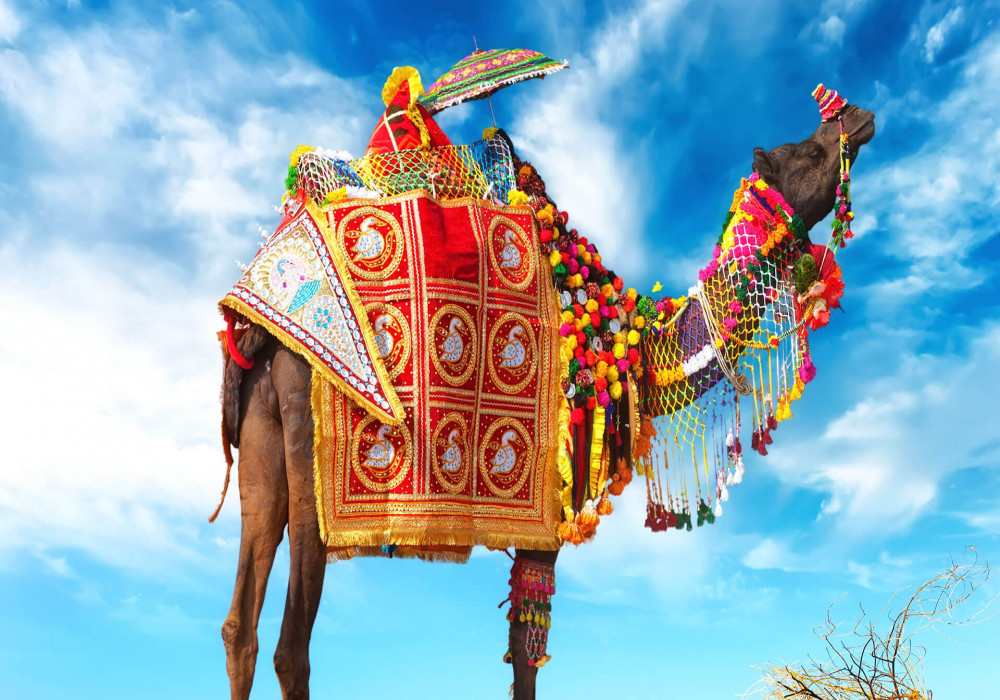
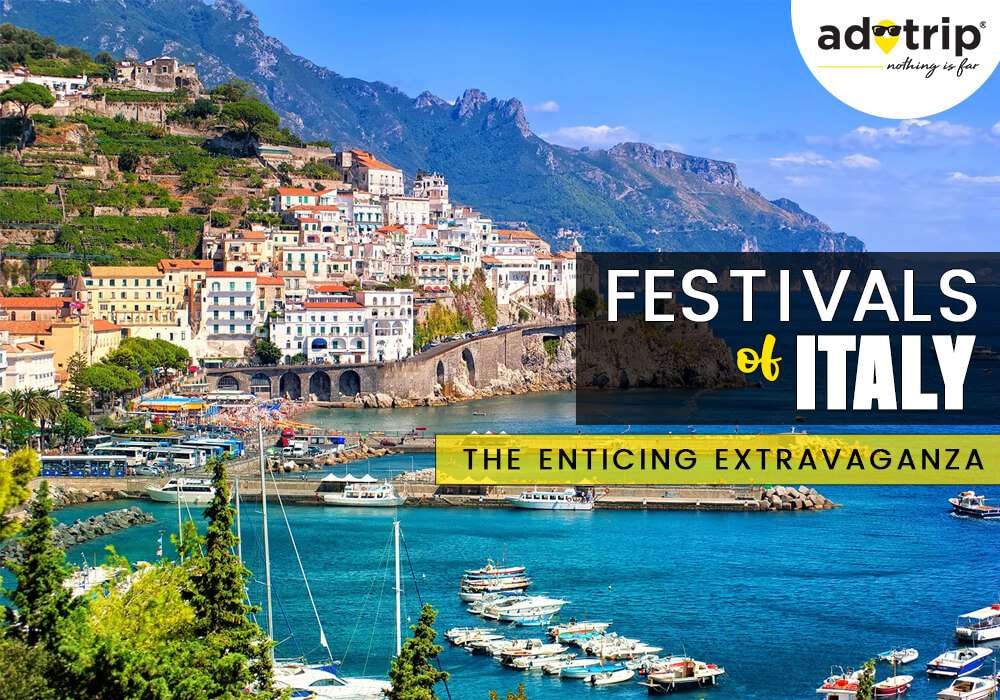
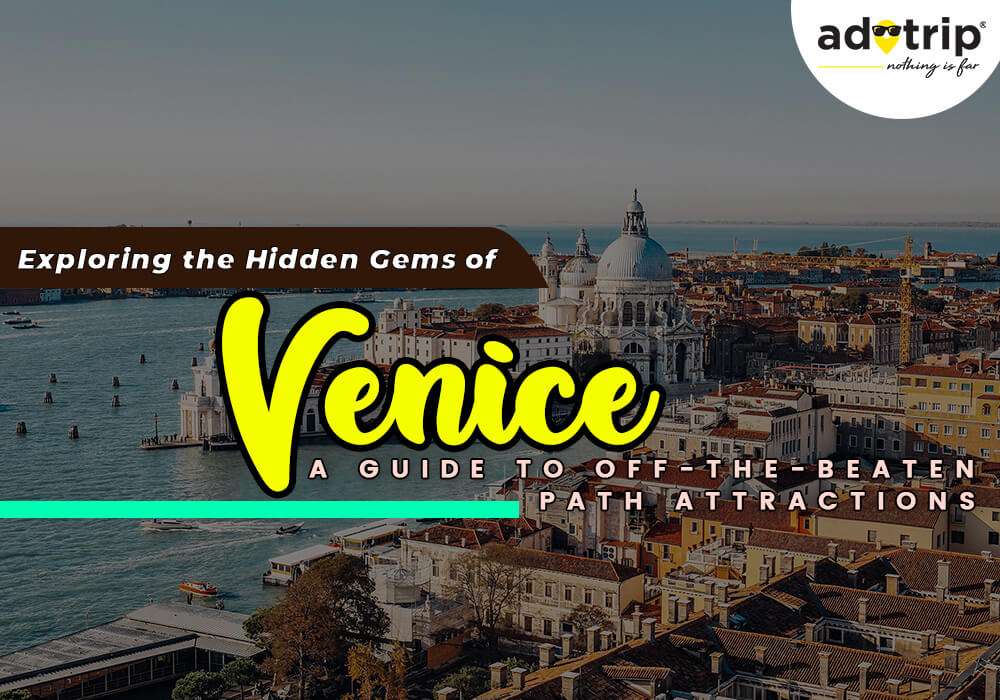
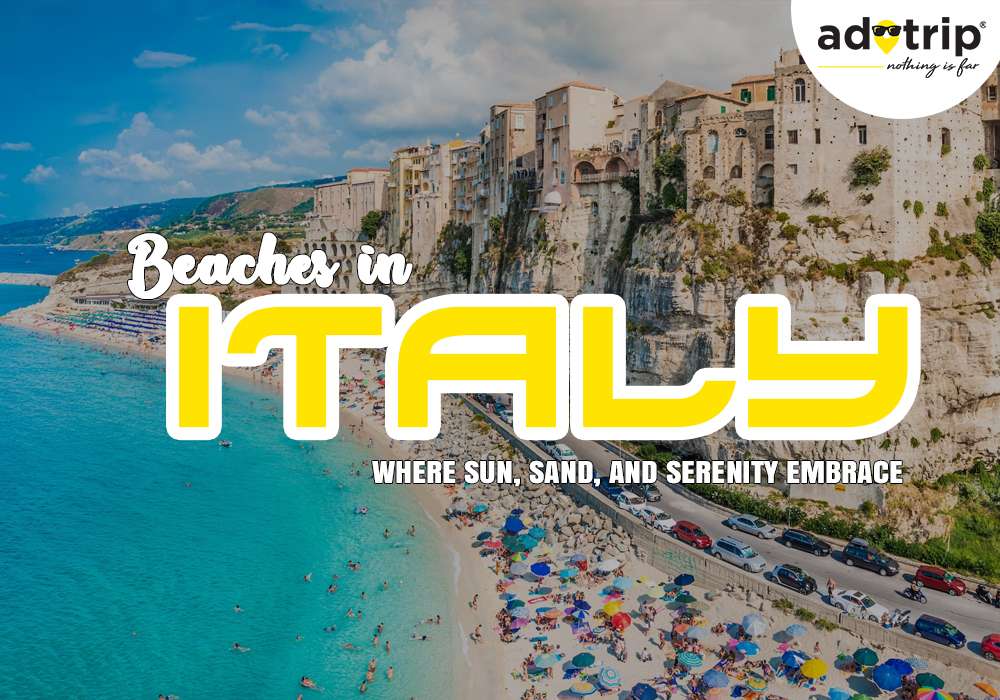
.jpg)
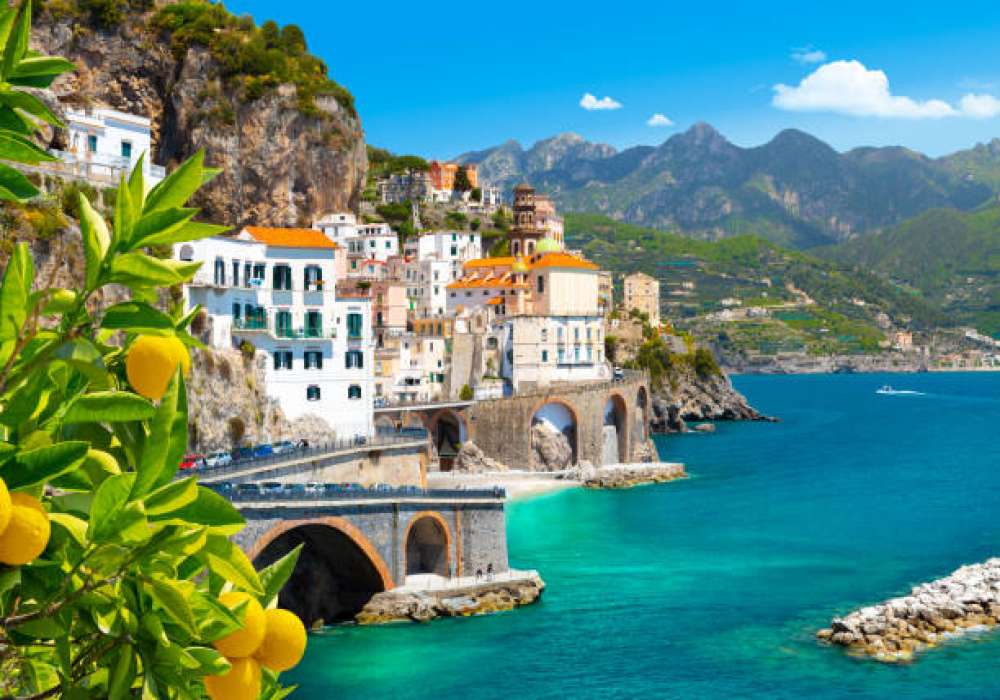
 Dubai
Dubai Malaysia
Malaysia USA
USA





